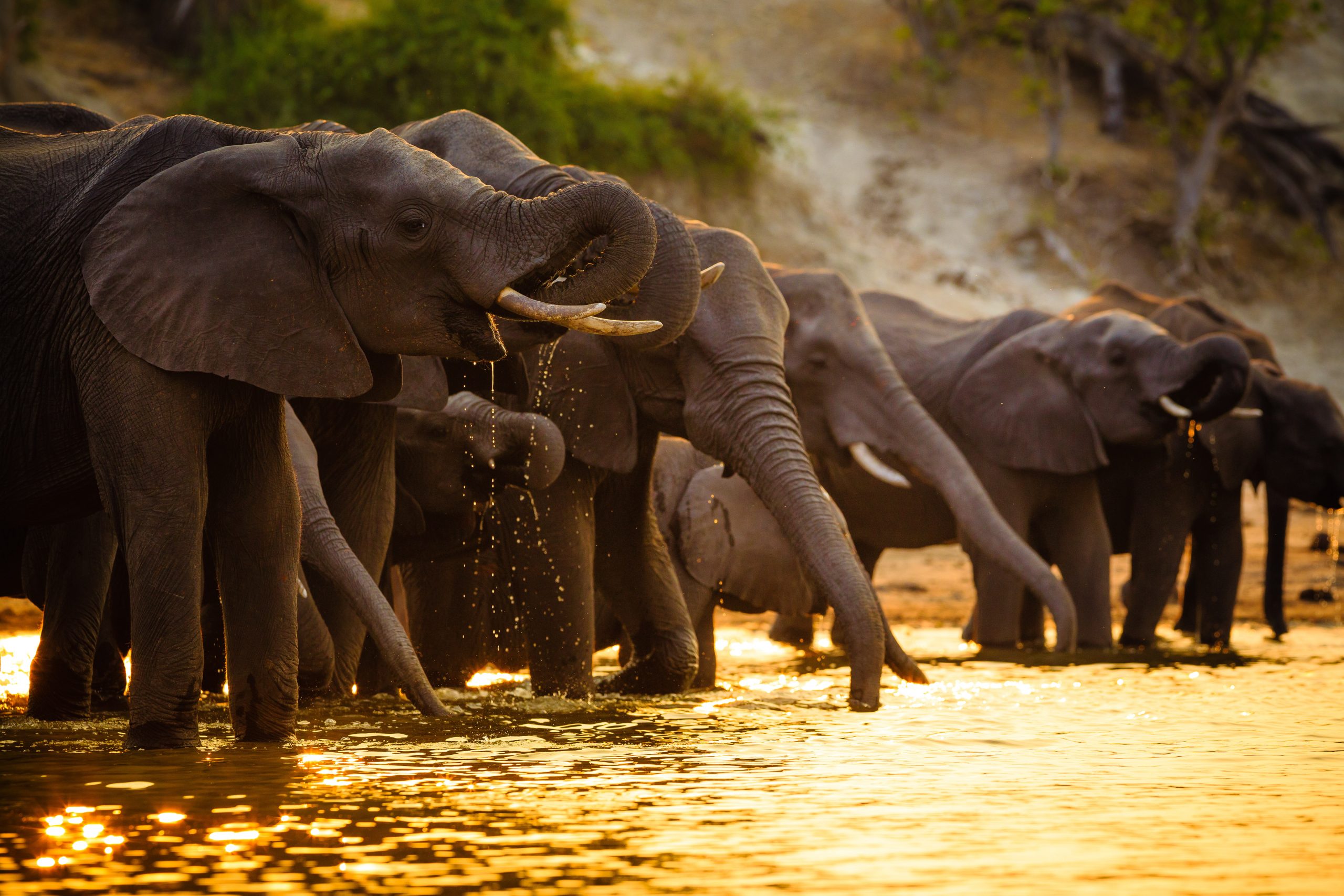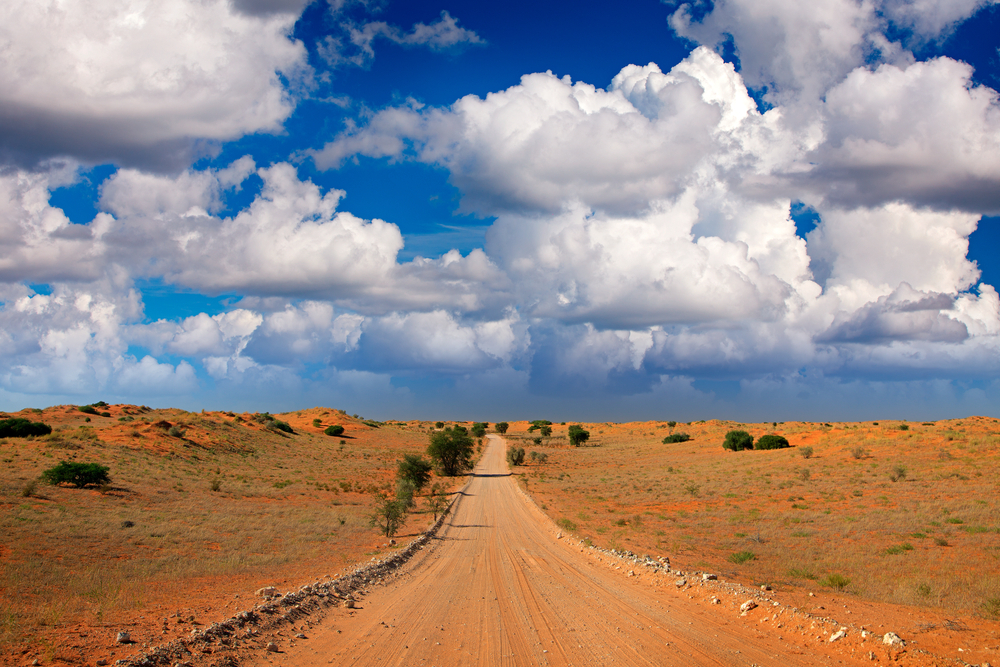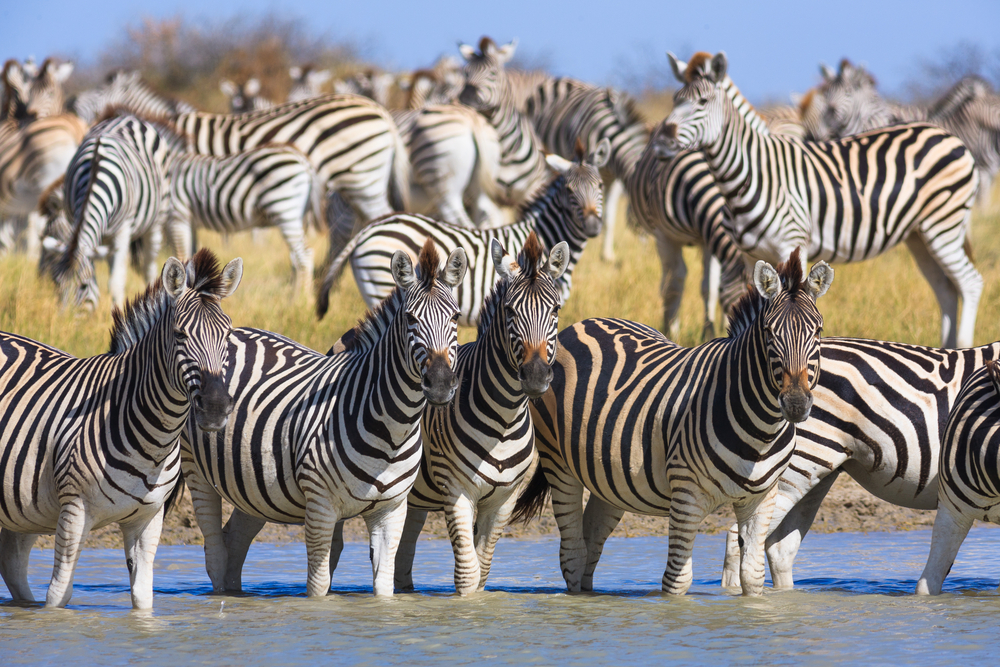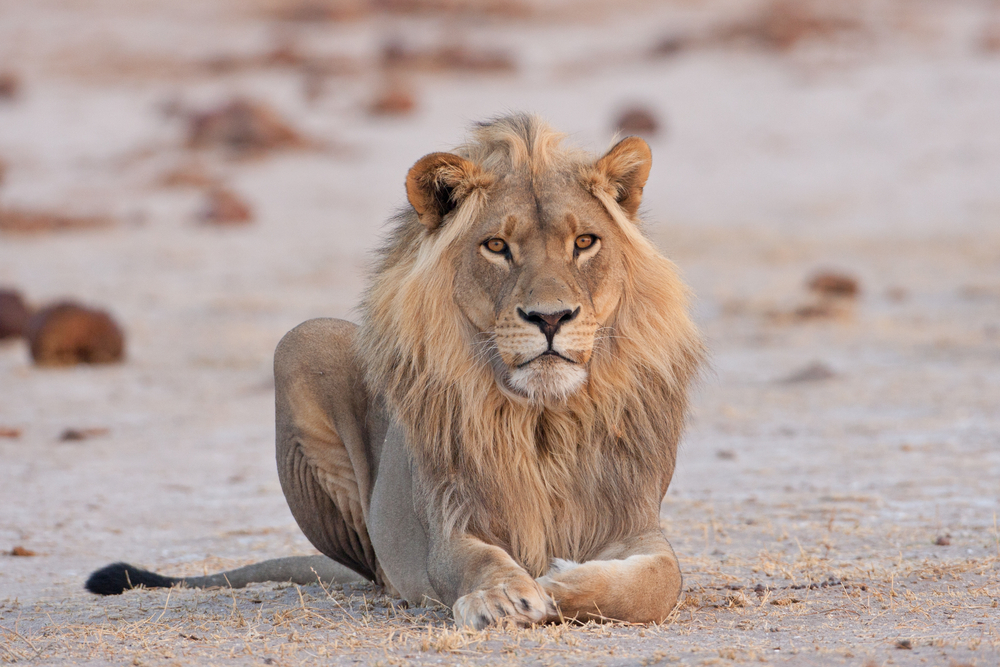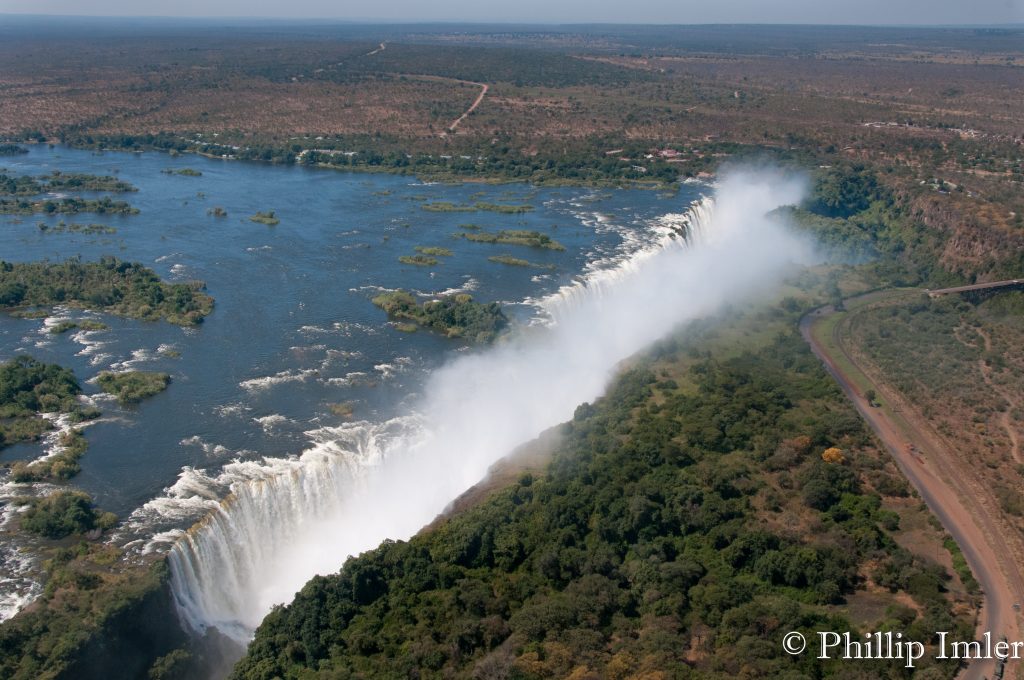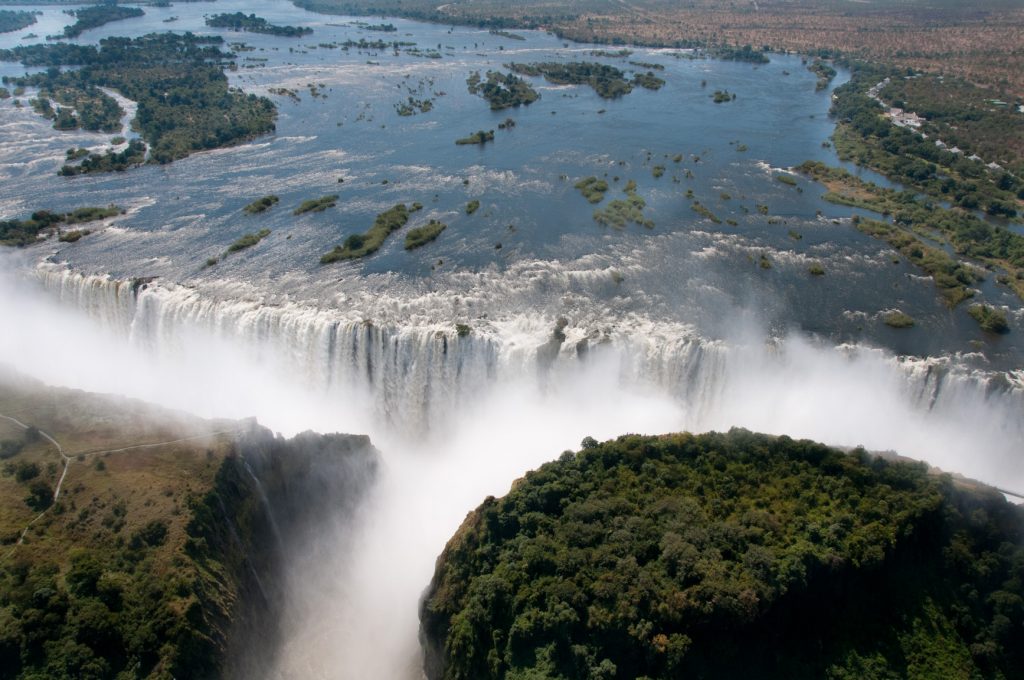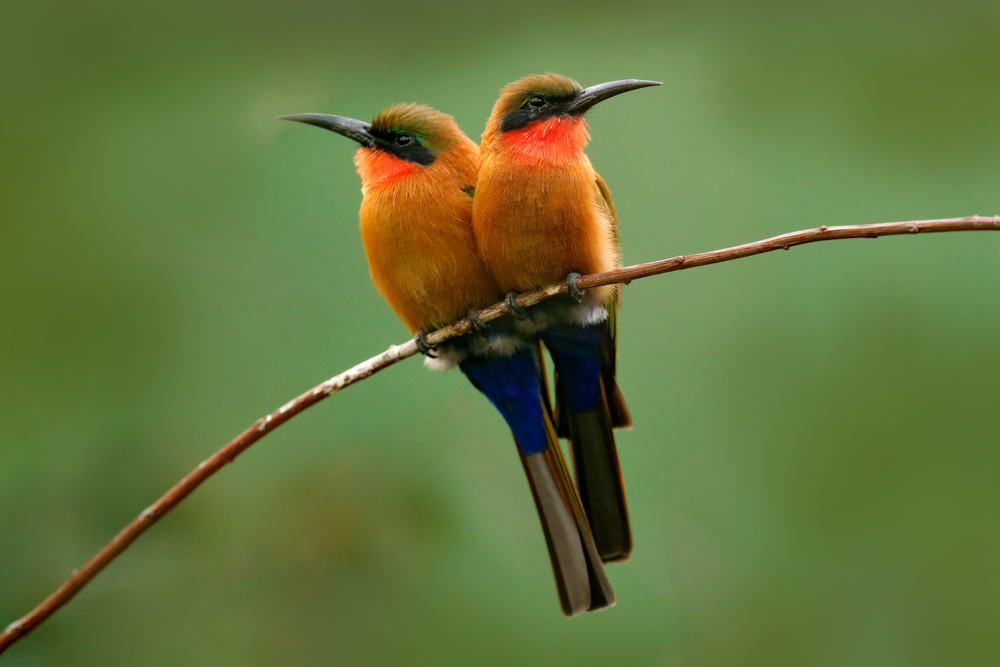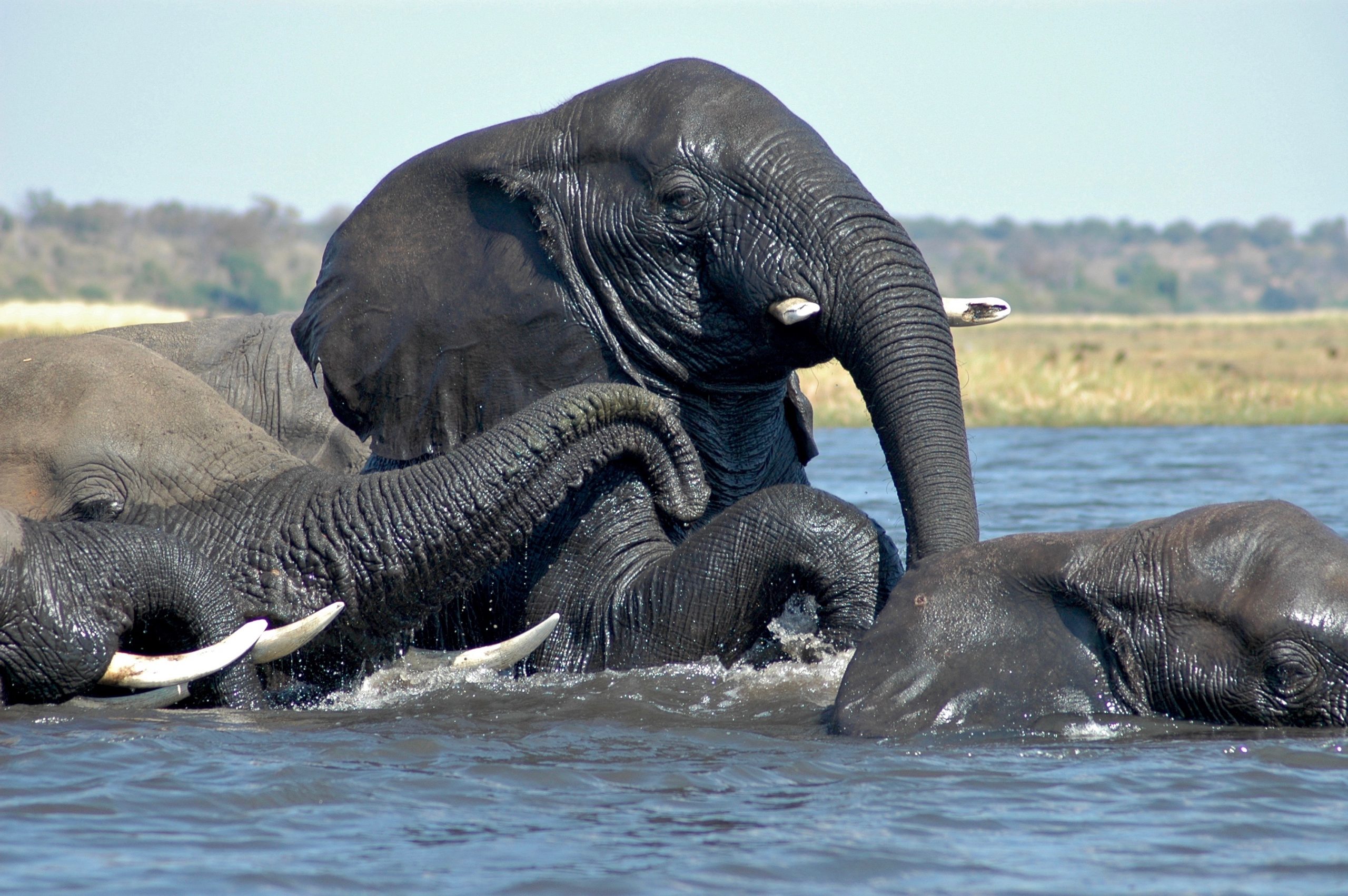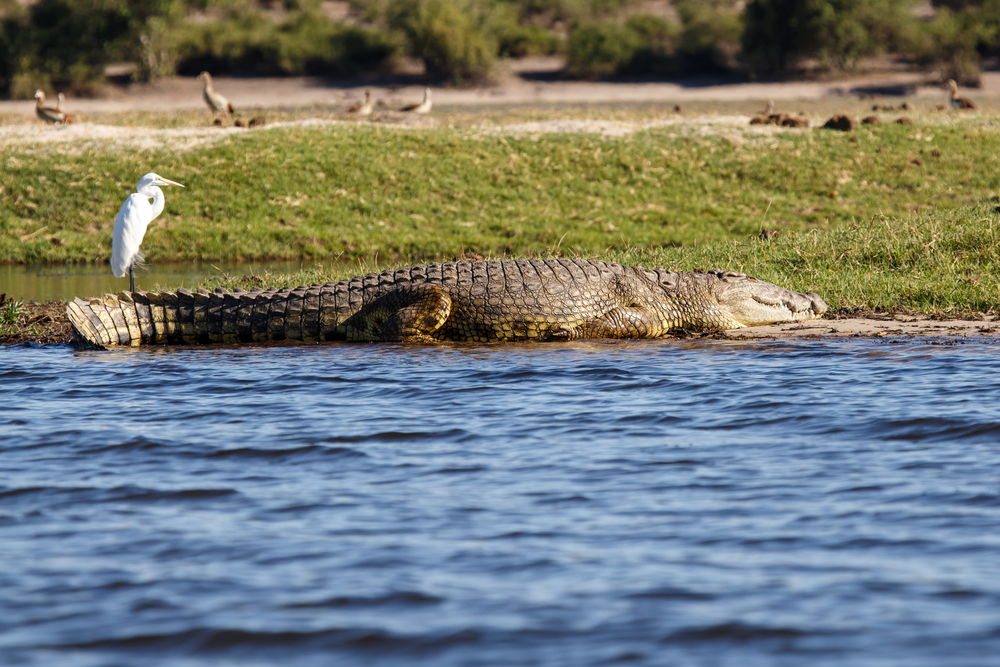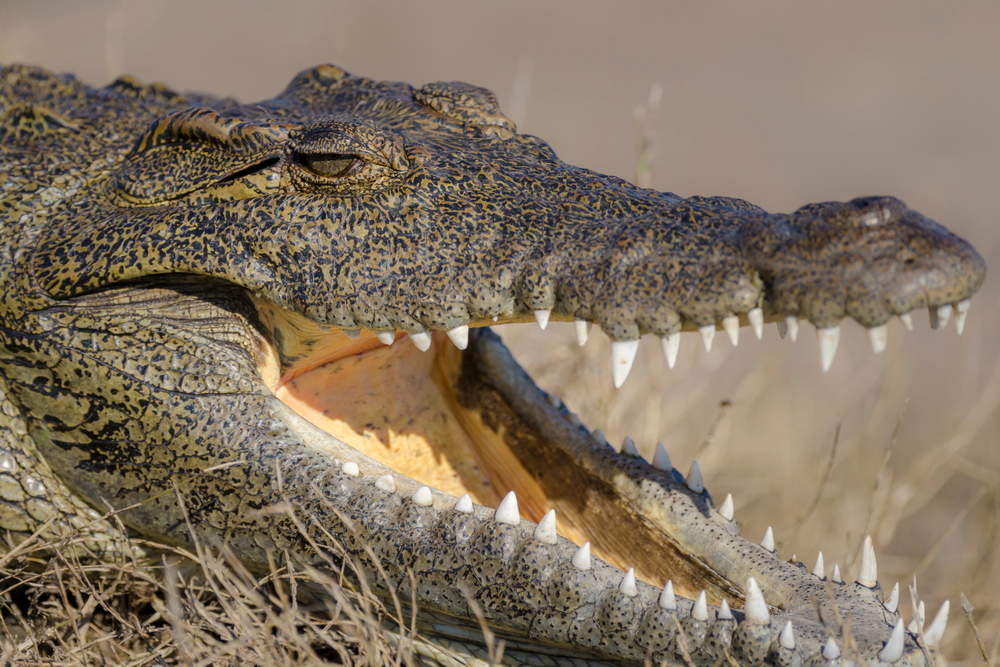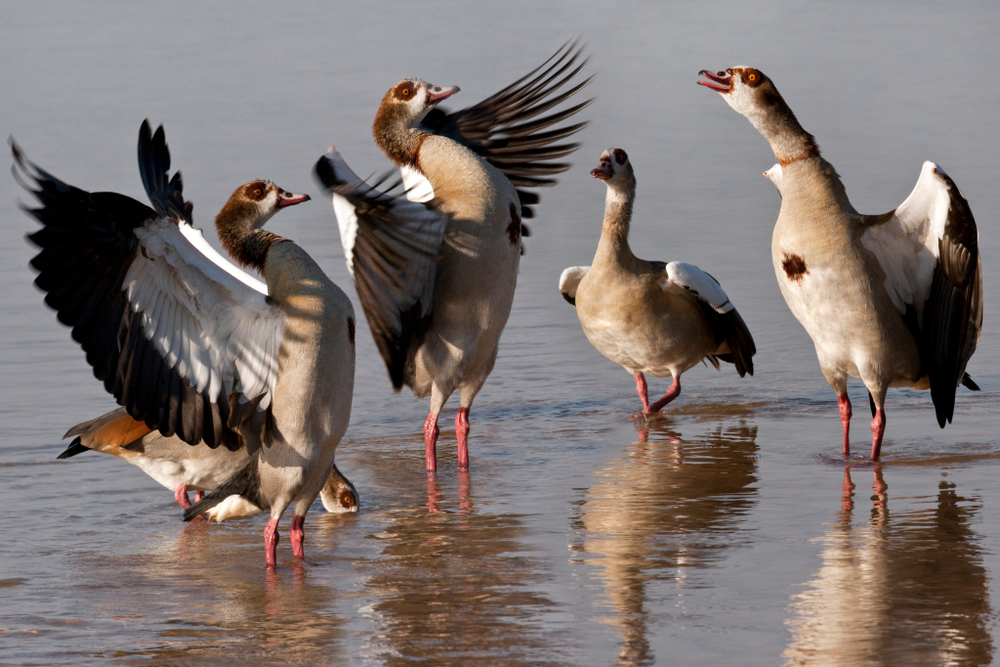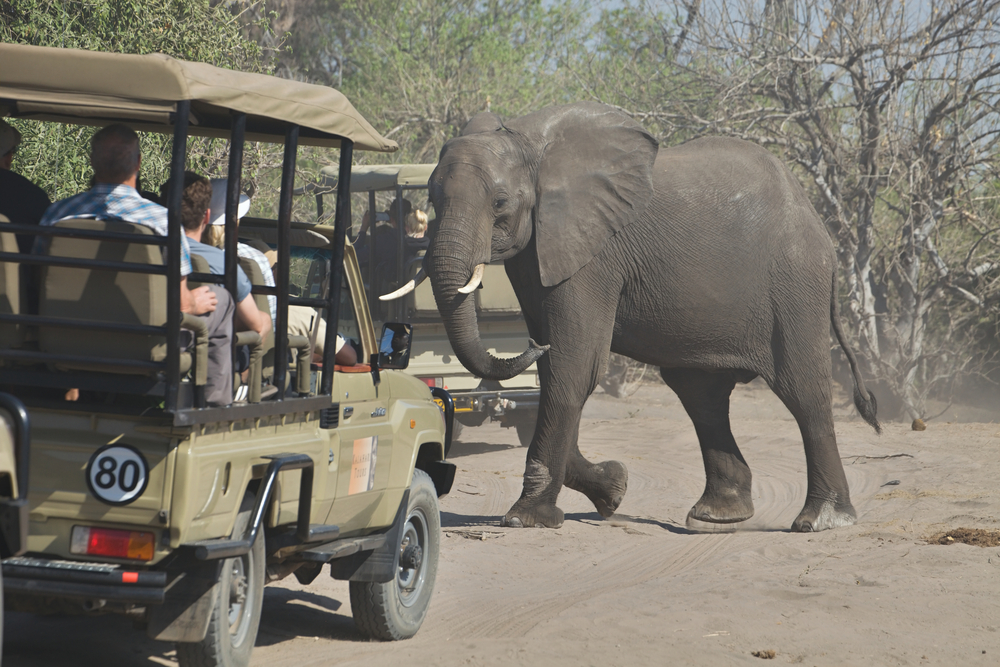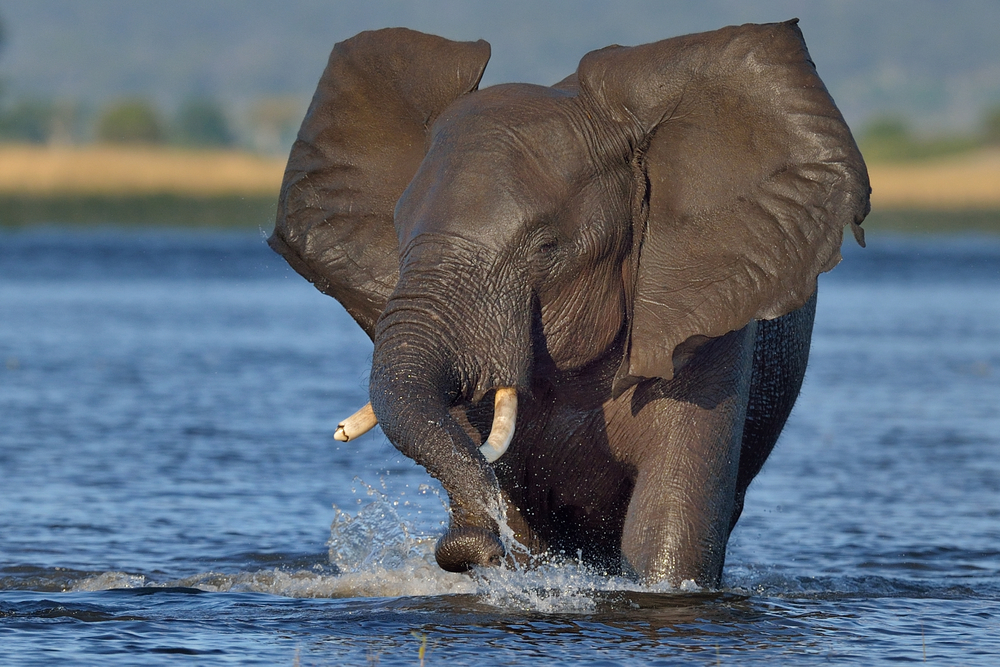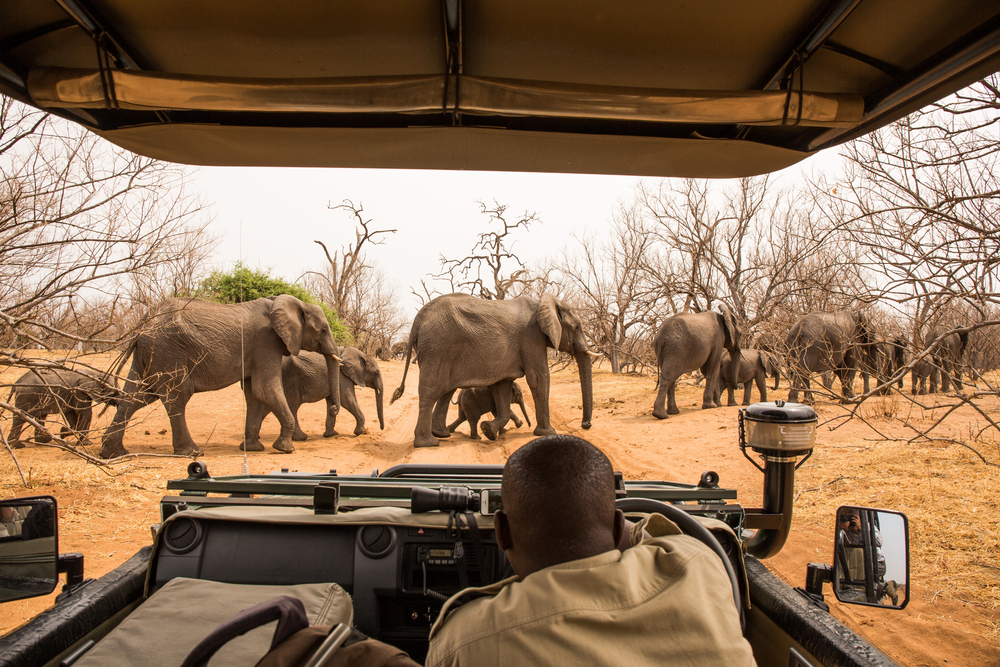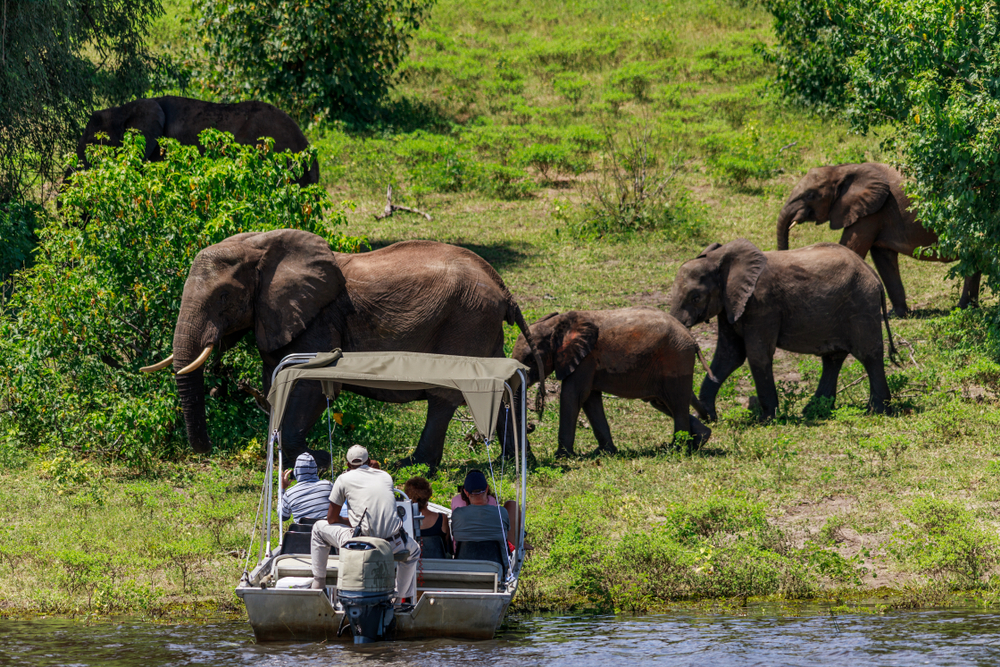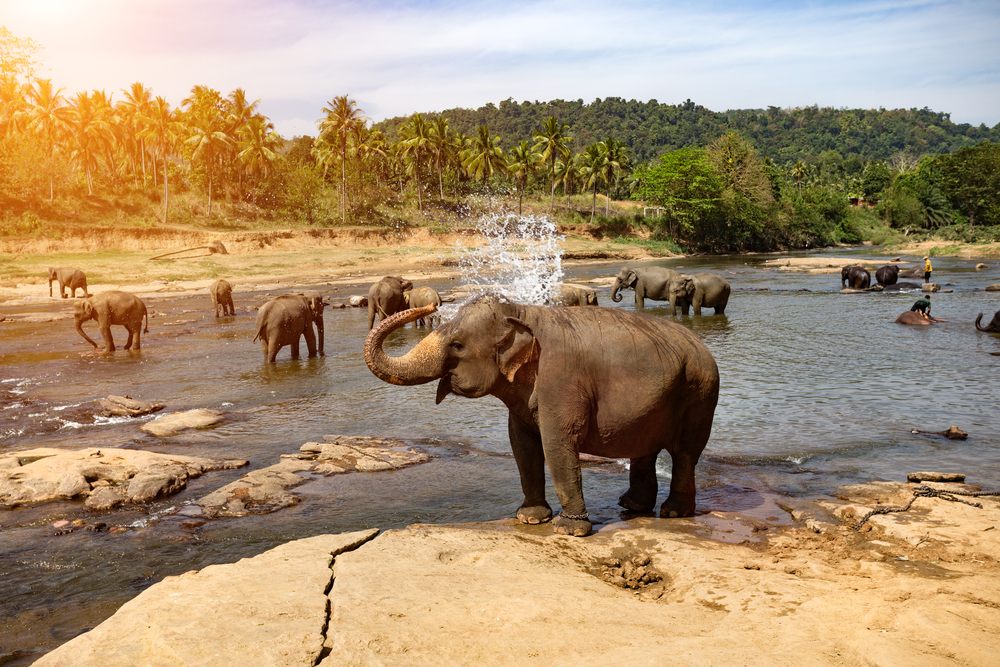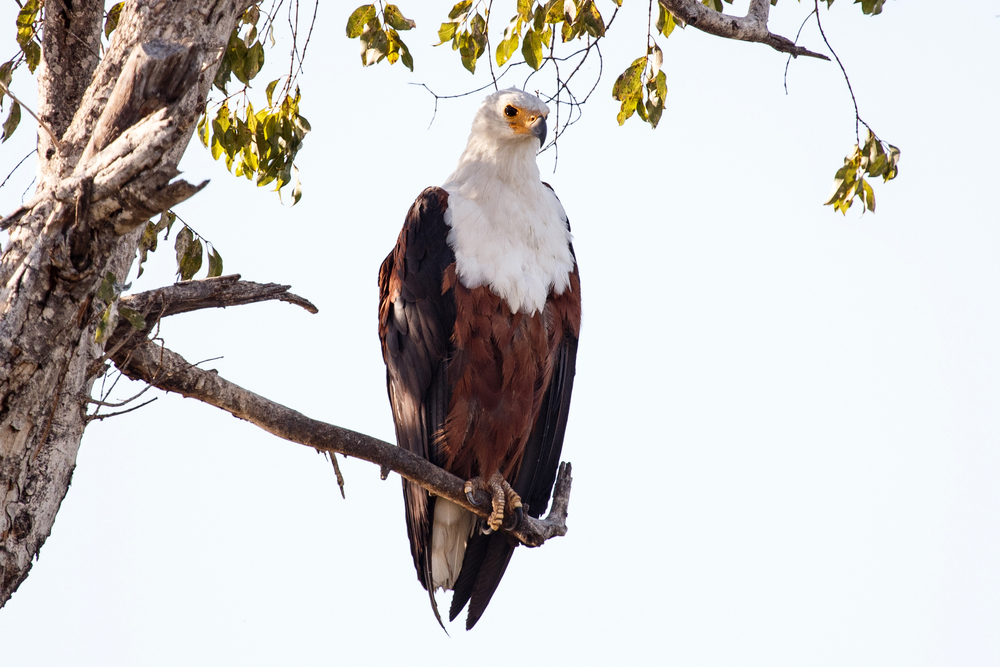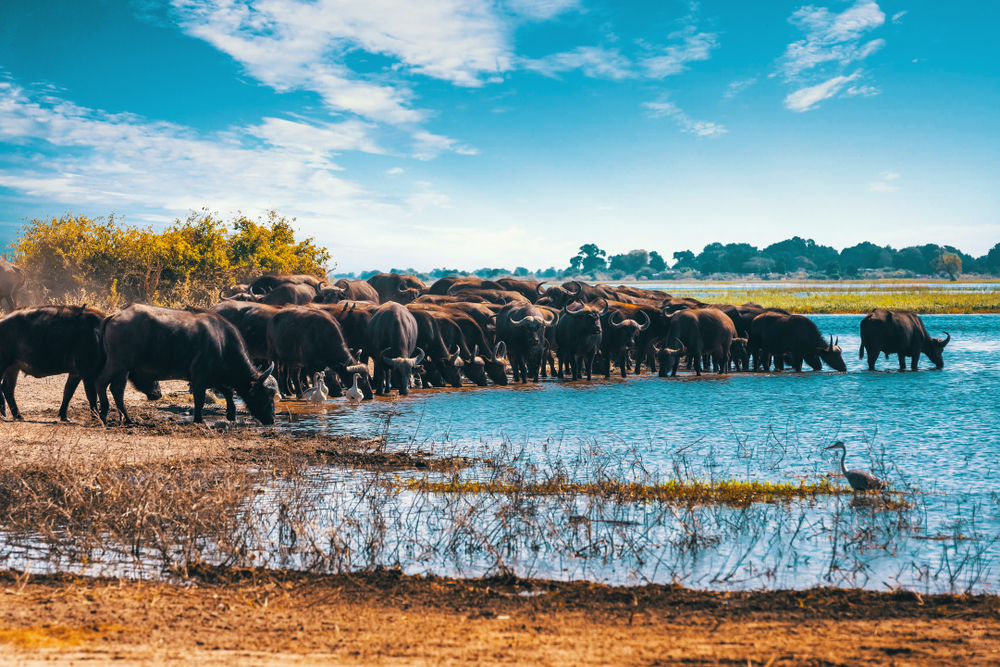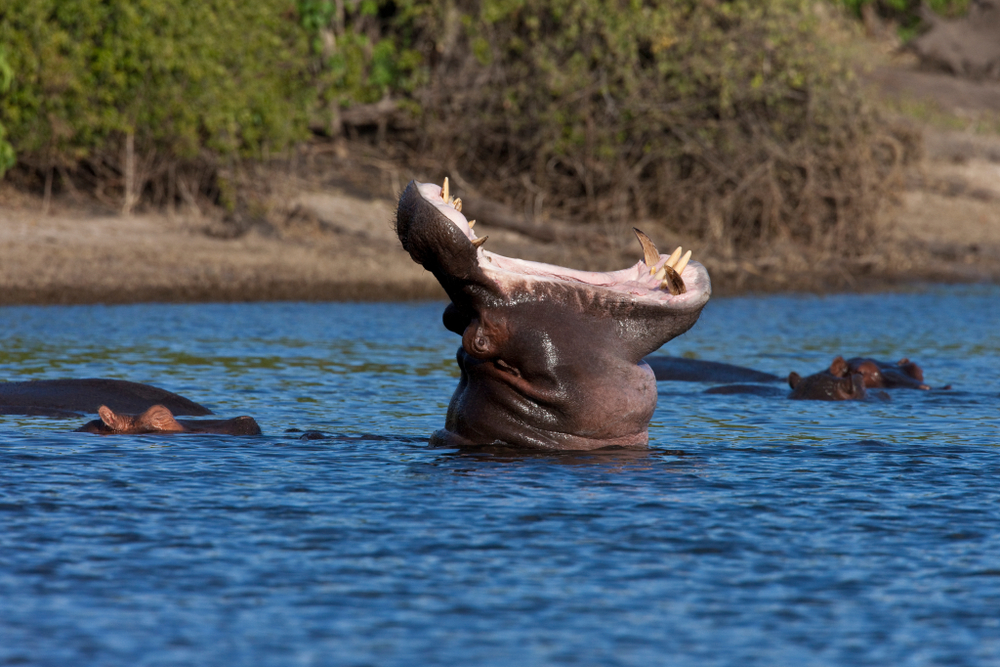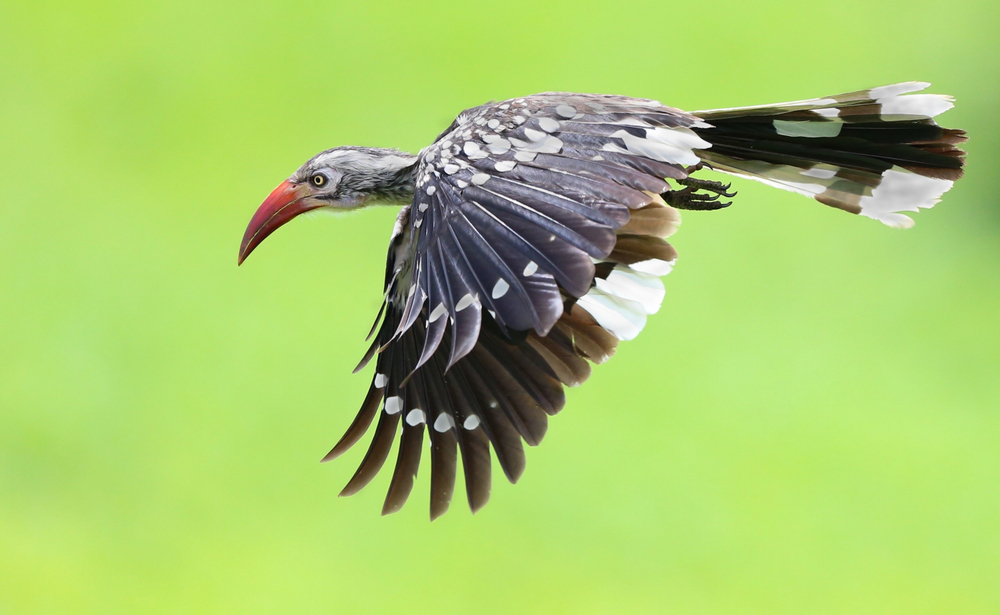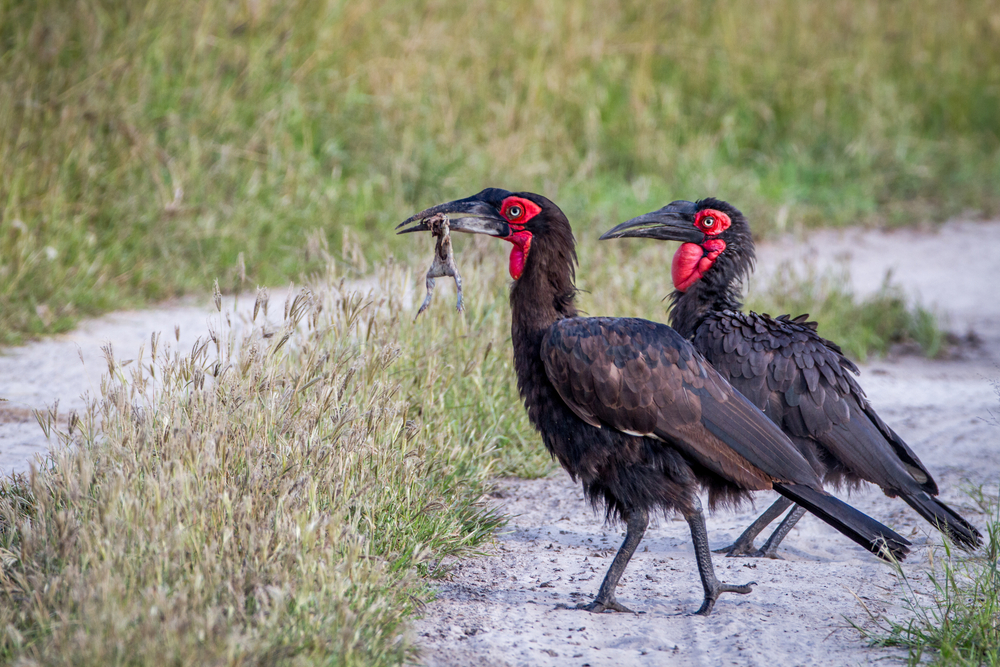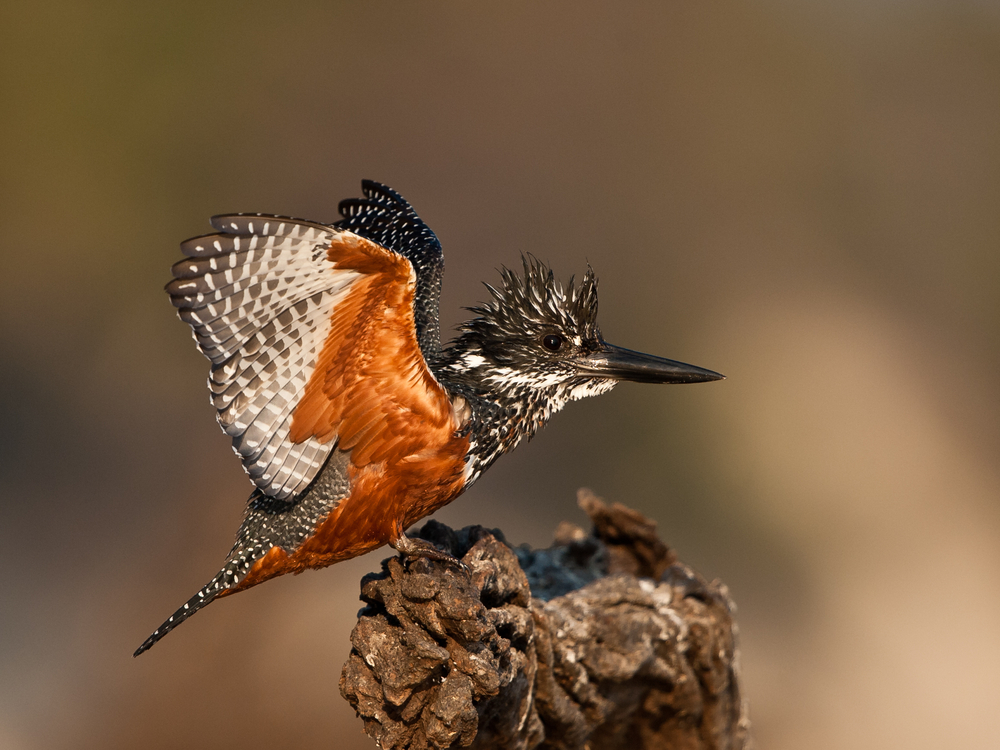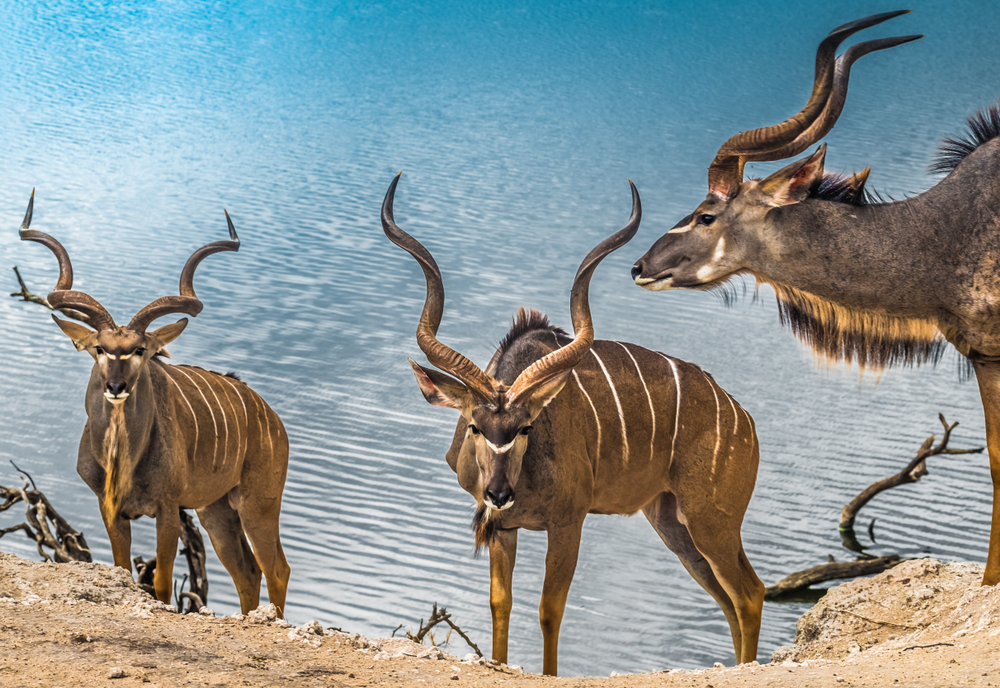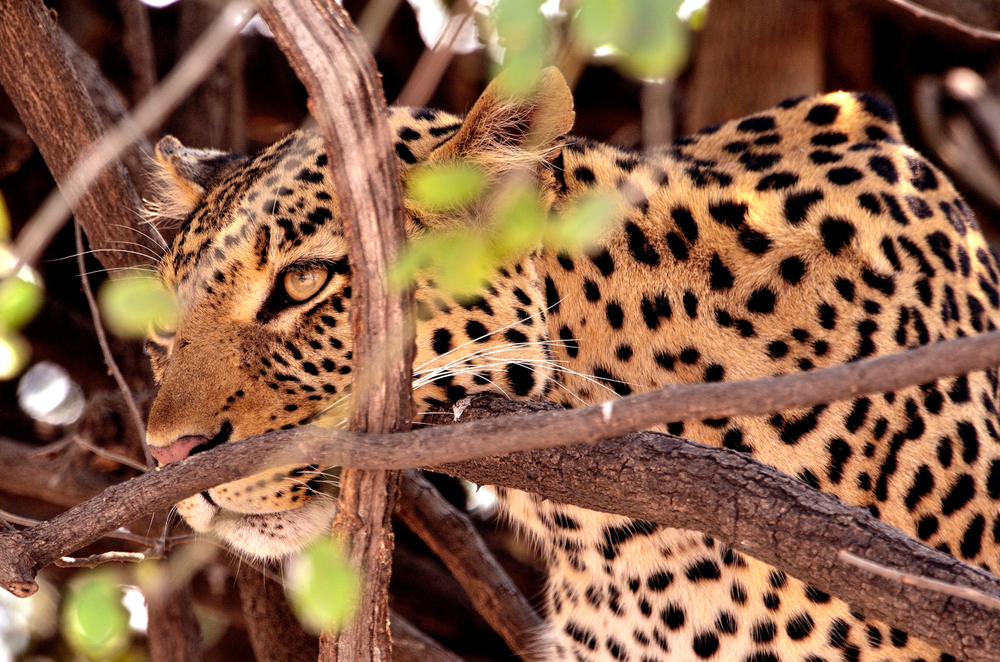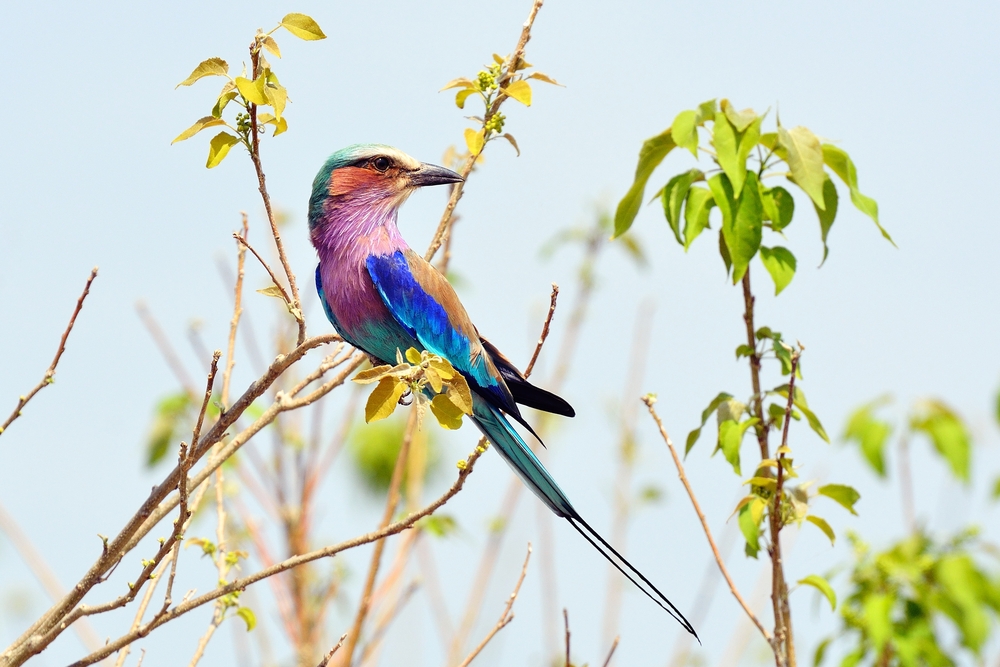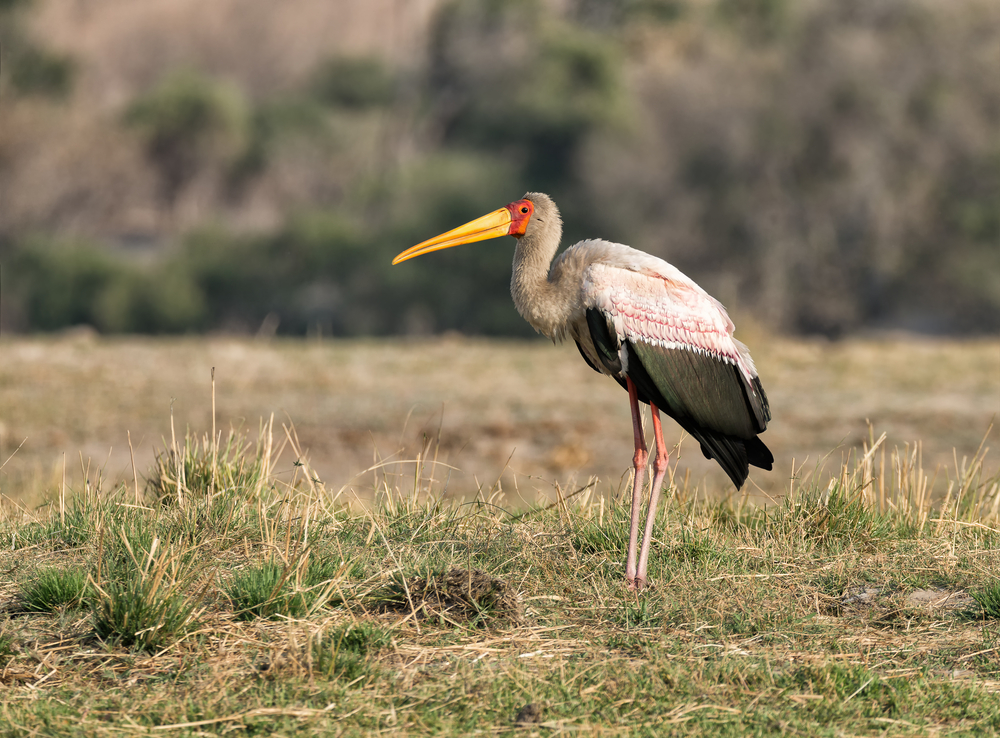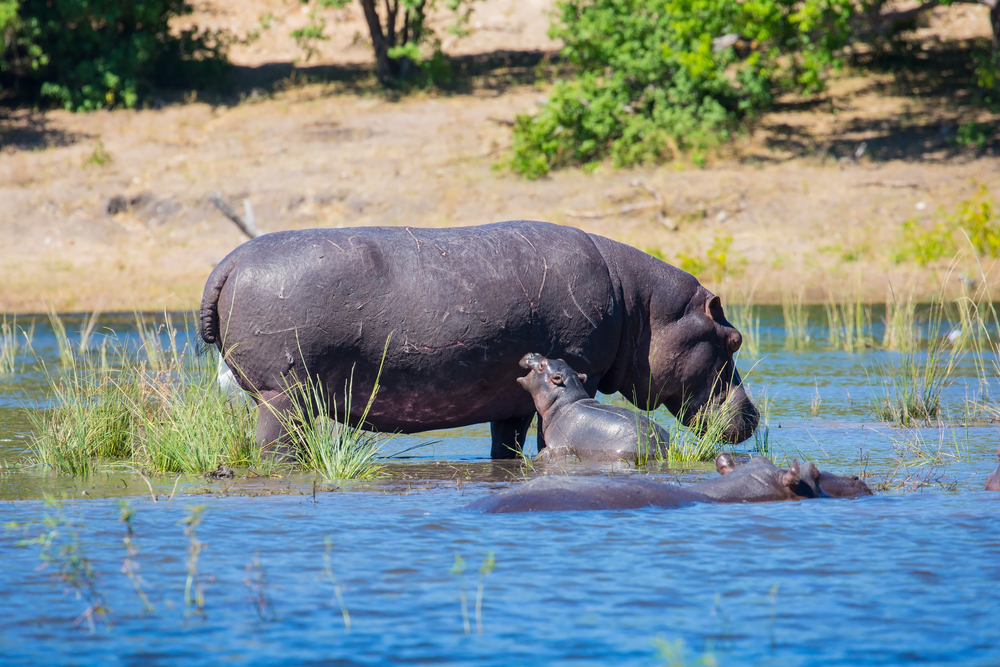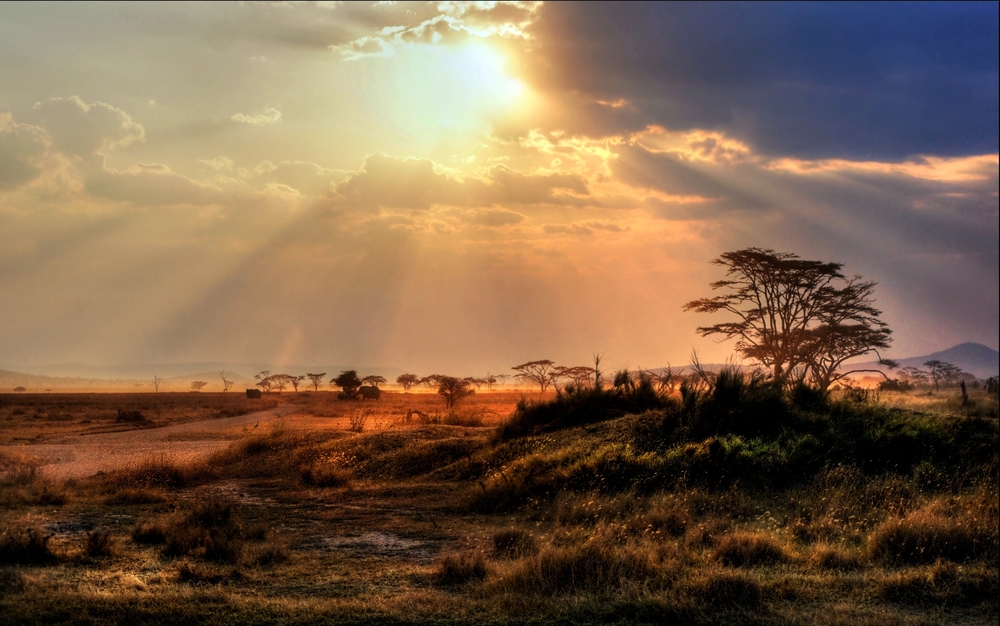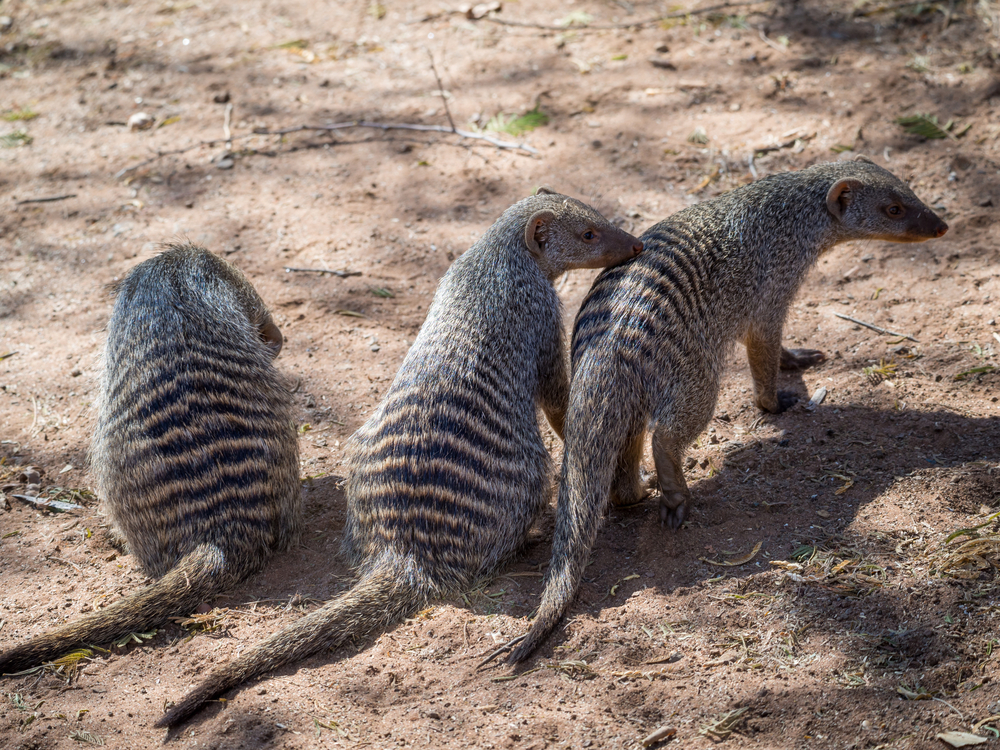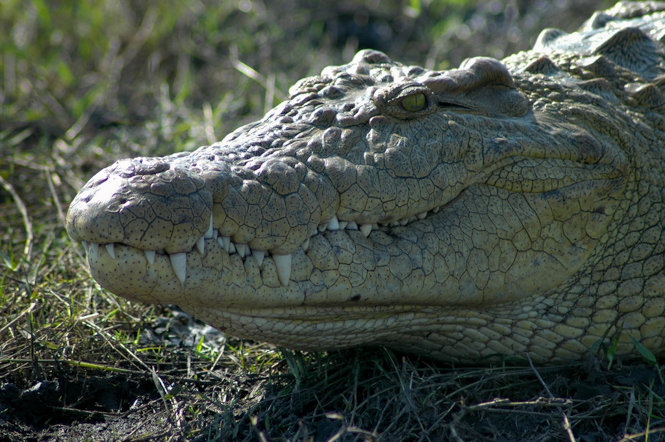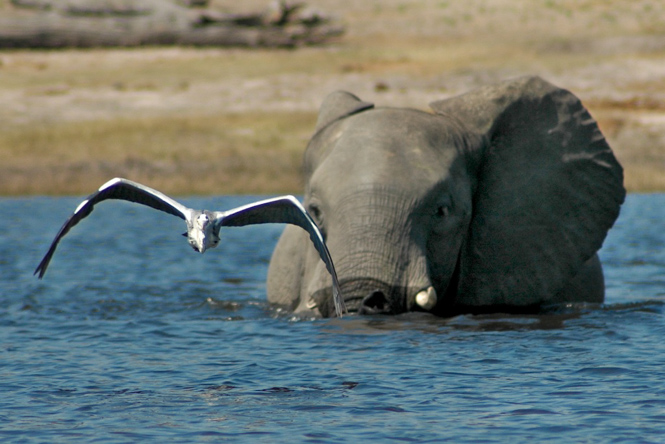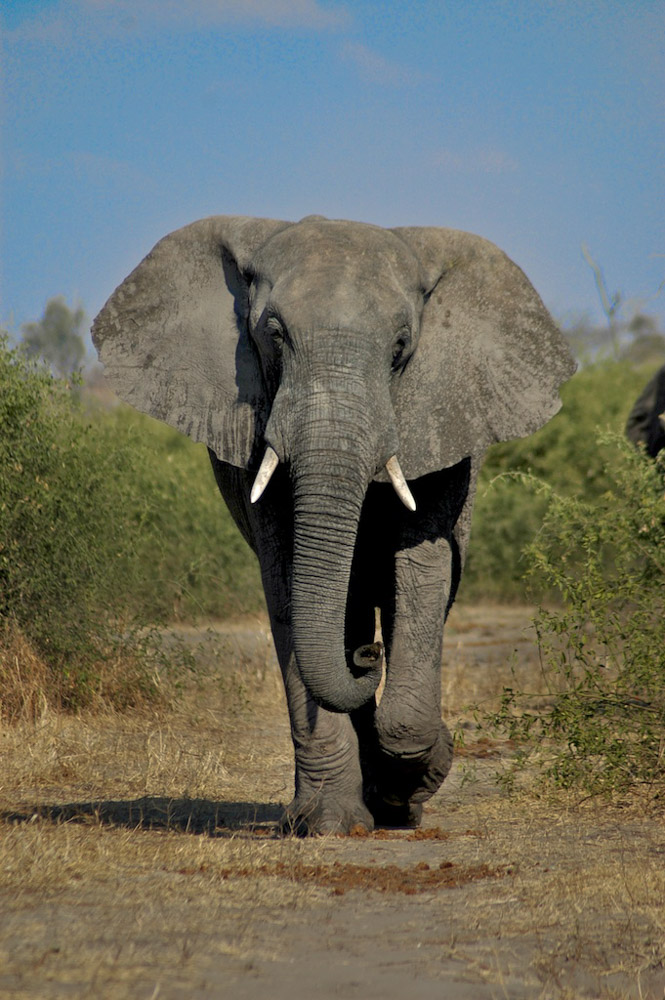Birds
Chobe National Park is a haven for birdwatchers, boasting a diverse avian population that includes both resident and migratory species. Here are some of the most sought-after bird species found in the park:
African Fish Eagle: With its distinctive white head and striking call, the African fish eagle is a symbol of Africa’s waterways. Often seen perched near rivers, lakes, and wetlands, it swoops down to catch fish with its powerful talons.
Lilac-breasted Roller: Vibrantly colored and unmistakable, the lilac-breasted roller is a common sight in Chobe, often perching on exposed branches where it hunts for insects or displays its stunning plumage.
Southern Ground Hornbill: Known for its deep booming call and striking appearance, the southern ground hornbill is a large bird often seen foraging on the ground in search of insects, small reptiles, and amphibians.
Yellow-billed Hornbill: With its distinctive curved yellow bill and black-and-white plumage, the yellow-billed hornbill is a familiar sight in Chobe, often seen hopping along the ground in search of food.
Marabou Stork: Towering and ungainly, the marabou stork is nevertheless an impressive sight in Chobe, often seen near water sources where it scavenges for fish, carrion, and scraps.
Southern Carmine Bee-eater: A dazzling splash of color against the savanna landscape, the southern carmine bee-eater is a gregarious bird often seen in large flocks, swooping and diving to catch insects on the wing.
African Jacana: With its long legs and striking plumage, the African jacana is often found walking delicately on lily pads and floating vegetation in Chobe’s waterways, foraging for insects and small invertebrates.
Pied Kingfisher: A master of fishing, the pied kingfisher is a common sight along the rivers and waterholes of Chobe, hovering before plunging into the water to catch fish with its dagger-like bill.
White-fronted Bee-eater: A sociable and colorful bird, the white-fronted bee-eater is often seen perched on branches overlooking rivers and streams, where it catches insects in mid-air or excavates nesting burrows in riverbanks.
Grey-headed Kingfisher: With its distinctive gray head and turquoise back, the grey-headed kingfisher is a sought-after species in Chobe, often perching on branches near water where it hunts for fish and aquatic insects.








































































